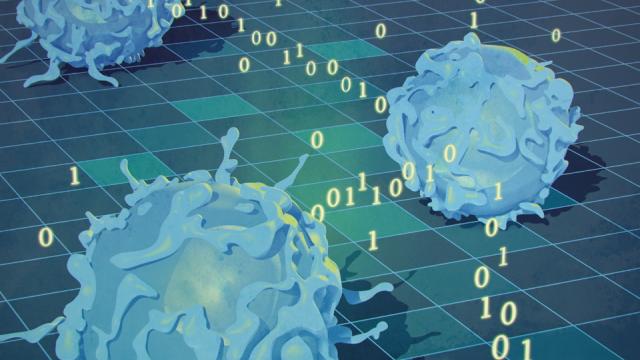
Cervical cancer cells from the HeLa cell line.
Photo courtesy of NCI Visuals Online
In May 2019, the FDA granted breakthrough therapy designation to a tumor-infiltrating lymphocyte (TIL) therapy technology known as LN-145 to treat advanced cervical cancer based on data presented by CCR collaborator Iovance Biotherapeutics. Breakthrough therapy designation is designed to expedite the development and review of drugs intended to treat a serious condition where preliminary clinical evidence indicates the drug may demonstrate substantial improvement over available therapy.
The designation helps to advance TIL research conceived in CCR clinical labs and moves this breakthrough type of cancer treatment further along the path from the lab to clinical trials and ultimately to patients with recurrent, metastatic or persistent cervical cancer who have progressed on or after chemotherapy. This type of cancer is very aggressive and the prognosis for patients after metastasis is poor.
The technology, from the CCR’s Surgery Branch, uses T cells that are naturally found in a patient’s tumor, called TILs. TILs that best recognize the patient's tumor cells in laboratory tests are identified and selected, isolated and grown to large numbers in the laboratory. The tumor recognizing cells are then activated by treatment with immune system signaling proteins called cytokines and infused into the patient’s bloodstream. This treatment is a “live therapy” consisting of a single infusion of TIL.
In addition to cervical cancer, CCR and Iovance are actively developing this type of therapy for some of the deadliest, hard-to-treat cancers, including breast, melanoma, bladder, lung and ovarian. The complex collaboration with Iovance involves two clinical trial CRADAs and seven technology licenses.
Related publications:
Stevanović S, et al. Clin Cancer Res. 2019 Mar 1;25(5):1486-1493.
Stevanović S, et al. Science. 2017 Apr 14;356(6334):200-205.
Stevanović S, et al. J Clin Oncol. 2015 May 10;33(14):1543-50.


